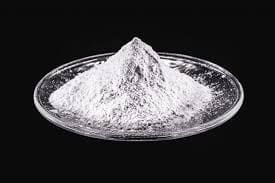
Phosphorus
Latin name: Phosphorus
Short name: Phos
Common name: Phosphorus | White Phosphorus | Yellow Phosphorus | Elemental Phosphorus
Primary miasm: Tubercular Secondary miasm(s): Psoric, Sycotic
Kingdom: Minerals
Family: Elemental metal
- Symptomatology
- Remedy Information
- Differentiation & Application
Phosphorus is a chemical element (P) found in nature as phosphate minerals but used homeopathically in its white (or yellow) form, which is waxy, volatile, luminous, and highly reactive. It combusts spontaneously in air and was historically produced from urine and bones.
Formerly used in matches, fireworks, pesticides, and poisons. Now also essential in fertilisers, steel production, and biochemical research (e.g., ATP, DNA, bone mineralisation). White phosphorus is highly toxic and corrosive.
First proved by Hahnemann. Expanded provings by Hering and others in the early 19th century.
- Nervous system: degeneration, hypersensitivity, electric excitability
- Blood and circulation: haemorrhages, anaemia, septic states
- Respiratory tract: lungs, larynx, mucous membranes
- Digestive system: liver, stomach, rectum
- Bones: especially spine and long bones (necrosis, caries)
- Skin and mucosa: burns, ulcers, eruptions
- Emotions: fear, need for affection, vivid imagination
- Left side: many symptoms localised here
- Degenerative states: nerve fatigue, atrophy, emaciation
- Cold drinks (though often vomited once warmed in the stomach) [Clarke]
- Lying on right side (especially in heart and lung conditions) [Hering]
- Company and emotional reassurance
- Short sleep or rest
- Eating (temporarily relieves burning and gnawing pains)
- Open air, especially cool fresh breeze (except in chest affections)
- Twilight and evening (anxiety and fear surge)
- Thunderstorms (marked sensitivity and fear) [Kent]
- Emotional excitement or mental exertion
- Talking (exhausts and aggravates hoarseness or cough)
- Lying on left side, particularly in heart and chest complaints
- Heat, especially of the sun or warm room
- Odours, noise, touch, and light – general sensory hypersensitivity
- Fasting, especially with hypoglycaemic symptoms
- Sulphur – Also burning, worse from heat, craving sweets, but more egoistic and messy; Phosphorus is cleaner, more refined, affectionate
- Arsenicum album – Similar prostration, restlessness, burning pains; Arsenicum is more anxious, chilly, and structured
- Tuberculinum – Similar tubercular miasm and alternating states; Tub. is more destructive, migratory, and rebellious
- Lycopodium – Digestive and respiratory overlap; Lyc. is more haughty, insecure, and right-sided
- Pulsatilla – Also desires company, weepy; but Puls. lacks the burning, degenerative tendencies of Phos.
- Complementary: Ars., Nat-m., Sep.
- Antidotes: Nux-v., Coff.
- Inimical: Caust.
- Follows well: Bry., Rhus-t., Bell.
- Precedes well: Sil., Sulph., Calc.
Phosphorus embodies the luminous, sensitive soul—open, affectionate, artistic, but prone to burnout, bleeding, and collapse. Like the element itself, it glows beautifully but burns fast. Its energetic quality is centrifugal: always reaching outward for contact, light, understanding. It gives until it bleeds, physically and emotionally. There is a desperate need to connect, yet the body cannot hold the energy. The tissues lose tone; the blood flows too freely. The spirit soars while the flesh weakens. It is a remedy of compassionate exhaustion.
- A leading remedy in pneumonia, haemorrhage, and gastric ulcer
- Useful in post-viral fatigue, burnout, and collapse states
- Excellent for artists, empaths, or highly sensitive people
- Children needing Phos. are affectionate, sensitive, and vivid
- Low potencies (6C–30C) for physical states; high potencies (200C–1M) for mental/emotional
- Beware of over-repetition in weakened constitutions
Mind
- Fear, alone, of being
- Anxiety, evening, twilight
- Imagination, active
- Desire for company
- Sympathetic
Head
- Hair falling, vertex
- Headache, burning
- Vertigo, looking up
Eyes
- Photophobia, twilight
- Vision, blurred
- Burning, eyes
Stomach
- Craves cold drinks
- Vomiting, cold drinks as soon as warm in stomach
- Burning, stomach
Rectum
- Diarrhoea, painless
- Diarrhoea, morning
- Constipation, soft stool difficult to expel
Chest
- Haemorrhage, lungs
- Cough, talking agg.
- Pain, burning, chest
Extremities
- Trembling, hands
- Numbness, fingers
- Coldness, feet
Skin
- Bleeding, easy
- Eruptions, bleeding
- Burns, blistering
Generalities
- Worse, lying on left side
- Worse, evening, twilight
- Better, cold drinks
- Weakness, sudden, collapse
- Sensitivity, external impressions
Samuel Hahnemann – Materia Medica Pura: Original proving symptoms and guiding indications on Phosphorus’s sensitivity and bleeding tendencies.
James Tyler Kent – Lectures on Homoeopathic Materia Medica: Detailed psychological themes, sensory hypersensitivity, and differential comparisons.
C. Hering – Guiding Symptoms of Our Materia Medica: Clarified haemorrhagic and degenerative states, as well as rich insights on fever and lungs.
William Boericke – Pocket Manual of Homoeopathic Materia Medica: Provided clinical tips, modalities, and organ-specific applications.
John Henry Clarke – Dictionary of Practical Materia Medica: Elaborated on food cravings, modalities, and respiratory specifics with broad detail.
Timothy Allen – Encyclopaedia of Pure Materia Medica: Extensive repertory support and proving verification, particularly for eye and nerve symptoms.
